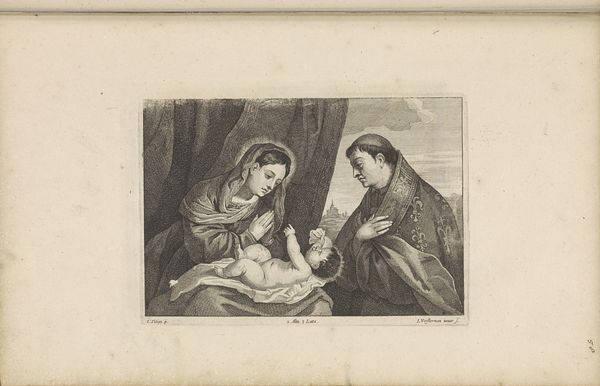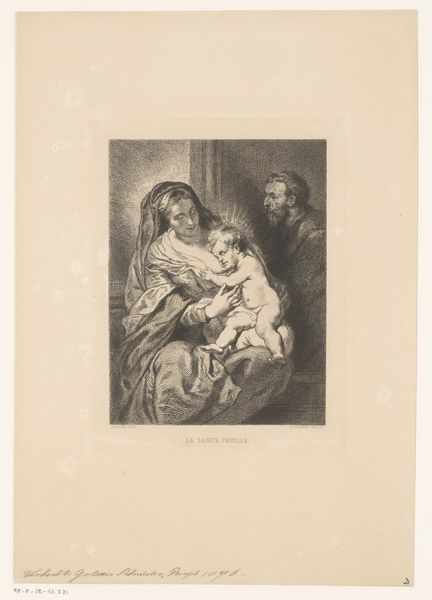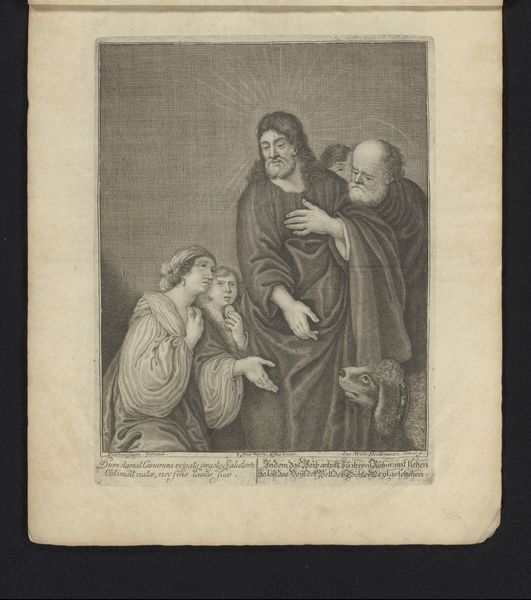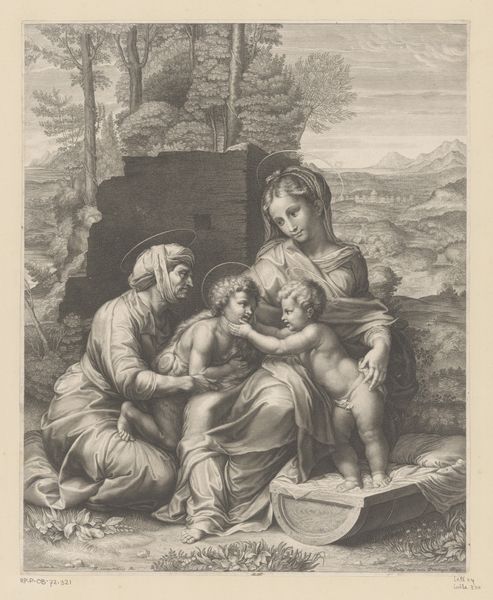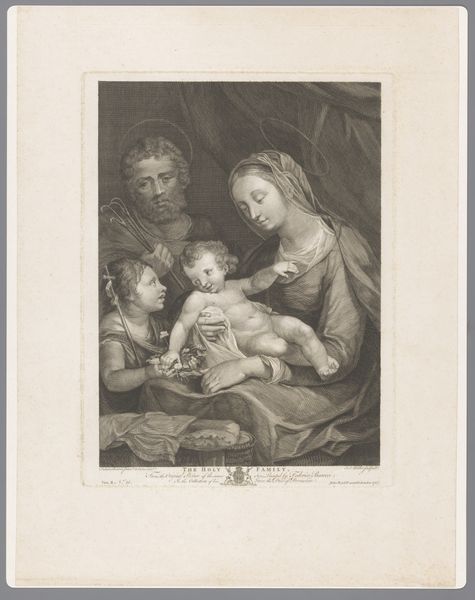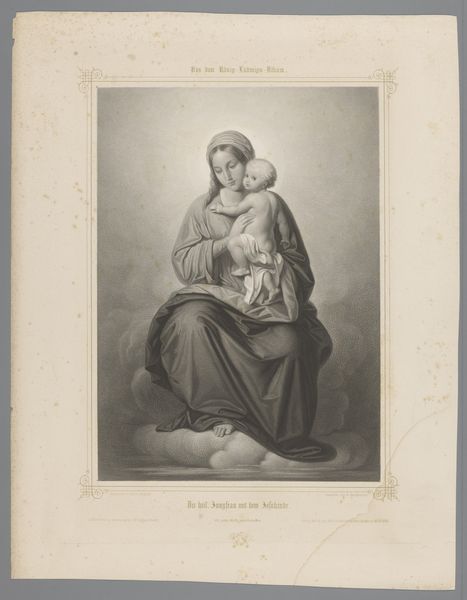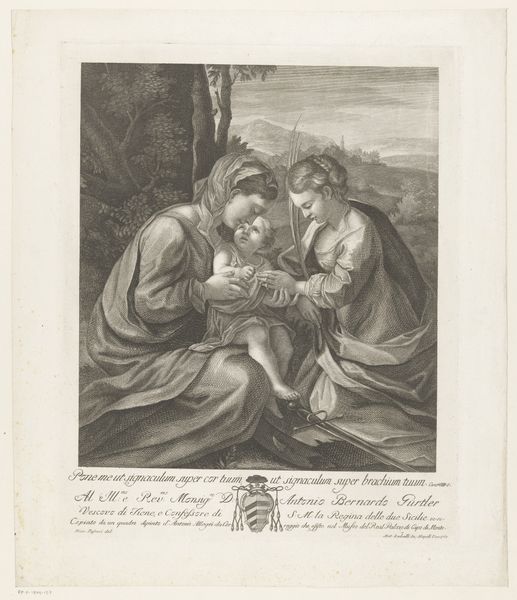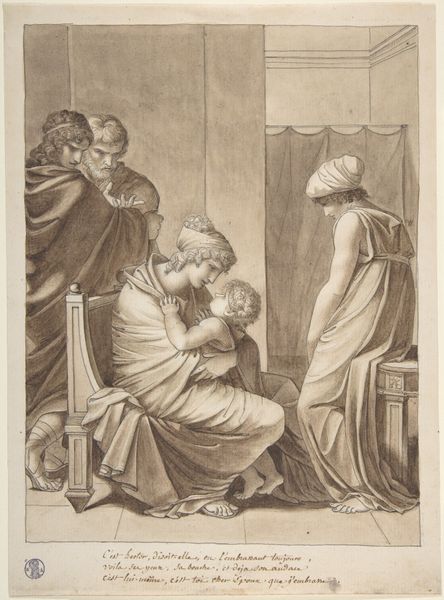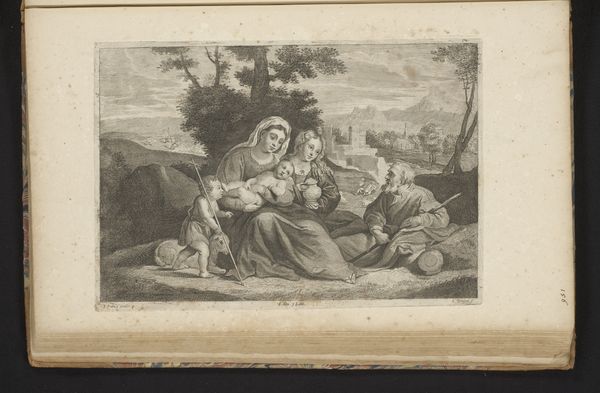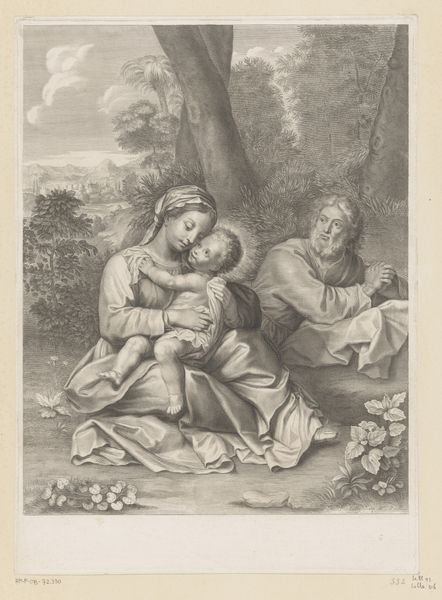
print, engraving
#
portrait
#
narrative-art
#
baroque
# print
#
old engraving style
#
figuration
#
line
#
history-painting
#
engraving
Dimensions: height 333 mm, width 218 mm
Copyright: Rijks Museum: Open Domain
Editor: Here we have "Rest on the Flight to Egypt," an engraving made between 1710 and 1714, attributed to Jakob Wilhelm Heckenauer. The figures seem serene, almost weary. Considering it's an engraving, the detail is striking. What’s your take on it? Curator: As a materialist, I find the process itself most compelling. This wasn't a unique artwork from inception. It required tools, skill, time, and existed in a marketplace. Let's consider the socio-economic factors. Who was the intended audience? What was the cost of an engraving like this relative to, say, a loaf of bread? This print could have reproduced hundreds, maybe thousands of times. Each print disseminated the religious narrative, sure, but also provided Heckenauer with sustenance, paid for his tools. Does it make us reconsider art as a privilege or see it as a job, perhaps both? Editor: I hadn’t thought of it like that. It challenges the idea of the lone artist creating solely for art's sake. Was printmaking considered 'high art' at the time? Curator: Precisely. That distinction is artificial. We should interrogate how the production and consumption of images was tied to systems of labor and capital. Was Heckenauer just replicating a drawing or did he invest labor and care? It certainly seems so to me given how intricate and delicate is this print. Editor: So, examining the material conditions helps us understand not only the artist but also the societal context? Curator: Exactly. This wasn’t just about religious devotion; it was also about making a living, circulating images, and engaging with a burgeoning visual culture fueled by reproducible media. By looking at this object, this “Rust op de Vlucht naar Egypte”, one can learn so much about history and the production that made this work possible. Editor: That’s a much broader view than I usually take. Thanks, this has shifted my perspective significantly.
Comments
No comments
Be the first to comment and join the conversation on the ultimate creative platform.

